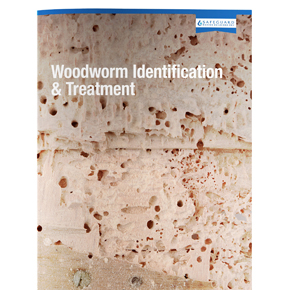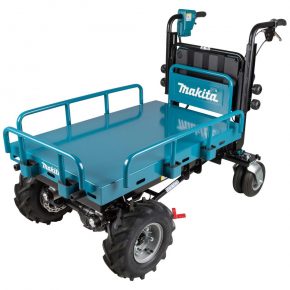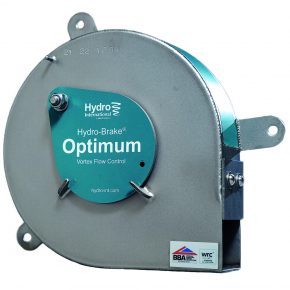
Listen to Safeguard and don’t let woodworm become a bugbear
Safeguard Europe has launched an incredibly useful guide which tackles the troublesome issue of larval infestation of timber; looking at how the cause can be accurately identified and the best solution to treating it.
A fair few species of ‘woodworm’ can be found in Britain; and for anybody associated with building maintenance or refurbishment, it is vital they can recognise them, as some woodworm can be more damaging that others.
The UK’s leading specialist in damp-proofing and waterproofing technology have introduced Woodworm Identification and Treatment. This guide is full of extensive colour photography, detailing the species you are likely to come across in the UK, from larvae to adult.
As well as identification, the publication also looks at what needs to be done to assess if a woodworm infestation is still active or has died out, and how to deal, long term, with small infestations of common species in an effective manner.
Some minor infestations can easily be dealt with by applying a high strength curative woodworm treatment, an example being Soluguard Woodworm Treatment.
However, there are others which will need a more in depth, extensive treatment by a professional company, with the recommendation they be a Property Care Association member.
The guide analyses a common confusion many people have; this is that ‘woodworms’ are worms and they are a damaging relation of the useful variety found in soil. In actual fact, woodworm are the wood-eating larvae, better known as maggots, of particular beetles.
The curative woodworm treatment method mentioned above sees the fluid applied to all surfaces of the affected timber. This kills adult beetles, which prevents them from reproducing.
However, it doesn’t kill larvae deeper than 2mm below the timber surface, so this type of surface treatment is only suitable for lighter infestations.
An important consideration when choosing woodworm treatment fluid is to differentiate between products tested under European Standards for either ‘curative’ or ‘preventative’ use – the latter use products of lower strength, meaning while new attacks on timber can be prevented, they cannot exterminate an existing infestation.
Heavier infestation, or those featuring more aggressive woodworm species, may require affected timber to be removed and replaced. Treatment with injected pastes or gels, like ProBor 20, could be used, as these have the ability to kill the larvae deep into the timber. NB- these are licensed by the HSE as only for professional use.
For a free copy of Safeguard’s Woodworm Identification and Treatment, visit www.safeguardeurope.com or email [email protected].
Contact:
Safeguard Europe,
Redkiln Close,
Horsham,
West Sussex,
United Kingdom,
RH13 5QL
Phone: 01403 210204
Fax: 01403 217529
Visit Safeguard Europe's website
Visit Supplier's page
Latest news

1st May 2024
Easy transportation with Makita’s DCU601 36V LXT
Power tool manufacturer Makita has added a new battery powered wheelbarrow to its extensive LXT outdoor power equipment range.
Posted in Articles, Building Industry News, Building Products & Structures, Garden, Hand Tools, Innovations & New Products, Plant, Equipment and Hire, Power Tools, Restoration & Refurbishment, Retrofit & Renovation, Site Preparation
1st May 2024
Hydro International incorporates future-proof design for Hydro-Brake® Optimum
Hydro International, an industry leader in water management products and services, is redefining the standard for hydraulic efficiency and adjustability.
Posted in Articles, Building Industry News, Building Products & Structures, Building Regulations & Accreditations, Building Services, Drainage, Drainage Services, Drainage, Guttering, Soffits & Fascias, Facility Management & Building Services, Information Technology, Innovations & New Products, Plumbing, Retrofit & Renovation, Sustainability & Energy Efficiency
30th April 2024
ASSA ABLOY Door Group strengthens offering with partnership
ASSA ABLOY Door Group is proud to announce a new internal restructure that sees the company joining forces with all comparable business units across Europe, the Middle East, India and Africa, to form a new global division – the ASSA ABLOY EMEIA Door Business Segment.
Posted in Access Control & Door Entry Systems, Architectural Ironmongery, Articles, Building Associations & Institutes, Building Industry News, Building Products & Structures, Building Services, Doors, Facility Management & Building Services, Restoration & Refurbishment, Retrofit & Renovation, Security and Fire Protection
30th April 2024
Geberit exhibiting at British Pig & Poultry Fair 2024
Bathroom and piping manufacturer Geberit will be exhibiting at the British Pig & Poultry Fair at NEC Birmingham (15 – 16 May 2024).
Posted in Articles, Building Industry Events, Building Industry News, Building Products & Structures, Building Services, Exhibitions and Conferences, Facility Management & Building Services, Innovations & New Products, Pipes, Pipes & Fittings, Plumbing, Retrofit & Renovation
 Sign up:
Sign up: